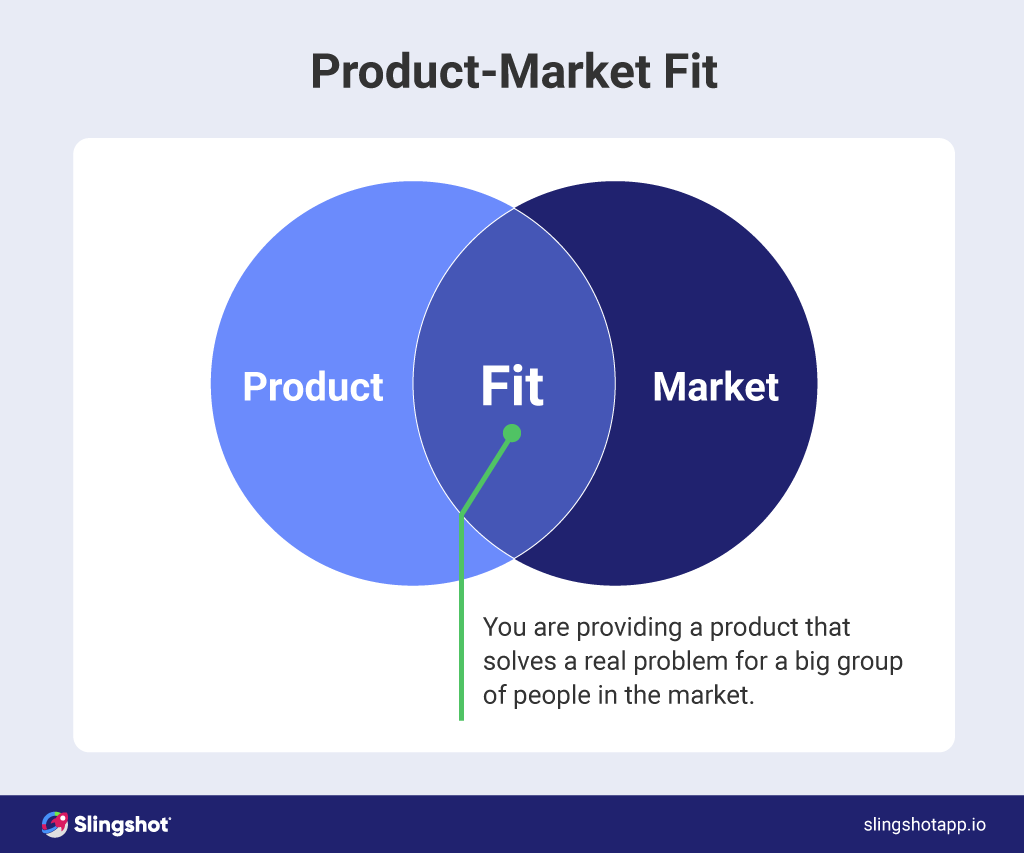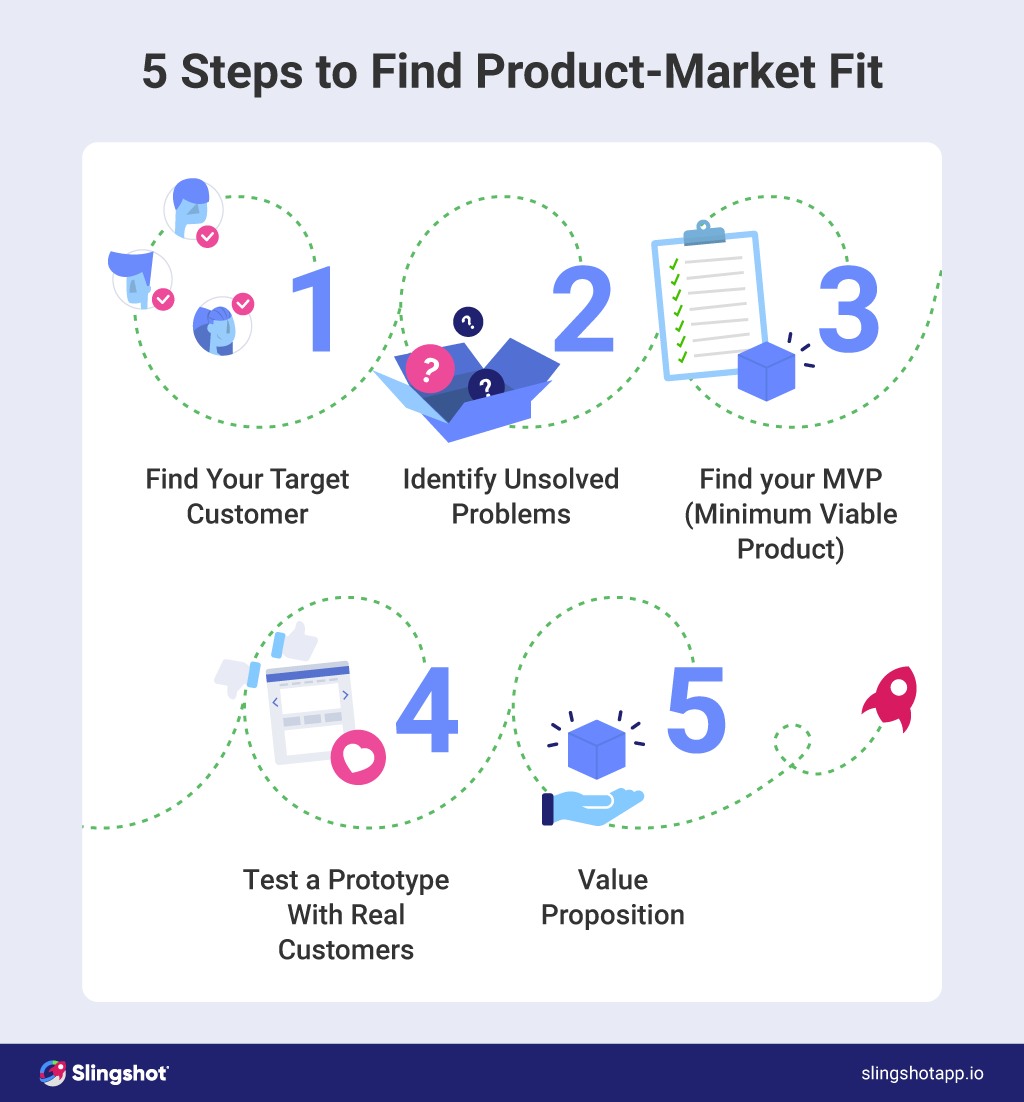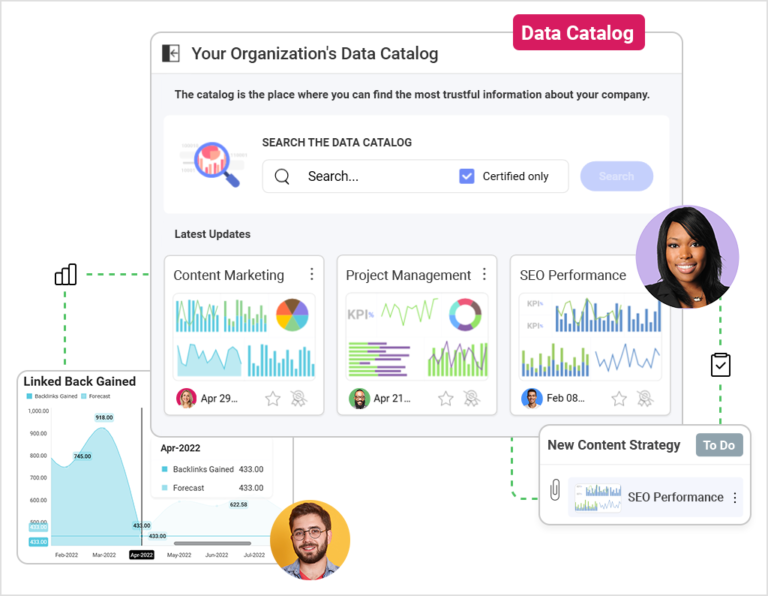
How Stephen Gould Scaled Its Capacity by 30% without Making a Single Hire

What your customers are experiencing in regards to the product you're offering, is everything. It's what drives results, retention, achieving better products, and more. Read along for the guidelines to finding your product-market fit.
Executive Summary:
What your customers are experiencing in regards to the product you're offering, is everything. It's what drives results, retention, achieving better products, and more. Read along for the guidelines to finding your product-market fit.
No matter if you’re a startup or a big company building your next product: what matters the most is how well you can woo the market.
The success of new products can vary, but one thing is for sure: building them need must be in response to strong demand, so you have a good product-market fit.
So how can you achieve it – quickly, effectively, and inexpensively?
Having a product-market fit is the ability of a specific company to retain customers by resolving their problems with its product. Releasing a product that has the right impact on the potential customers while at the same time targeting the right audience to pay attention to is key to achieving a good product-market fit.
“When you first start out, the only thing that matters is finding a cohort of customers who truly value what you offer. Growth alone means next to nothing.”
– Andy Rachleff, co-founder of Wealthfront and Benchmark Capital
The first to mention “product-market fit” as a term is the CEO of Wealthfront and Benchmark Capital, Andy Rachleff, but is later popularized by Sean Ellis, CEO of GrowthHackers. Product-market fit is inevitably associated with growth hacking – a relatively new field of data-driven marketing that provides ways for a company to expand and grow rapidly by experimenting. The focus of growth hacking is:
Creating a product that is in perfect synchronization with the market equals retention of customers – and that is why every startup or company developing a new product must strive to achieve product-market fit.

The importance of having a product-market fit lies in the fact that only through it you can be sure you are providing a product that solves a real problem for a big group of people in the market. Until you achieve PMF, you cannot be rid of the risk of investing in the development of a product that brings no value to the market and therefore will be overlooked. Finding your PMF means finding a way to a faster ROI and if you are a startup – faster growth.
“Product-market fit means being in a good market with a product that can satisfy that market.”
– Marc Andreessen
If a product-market fit is not achieved, companies could face:
In other words, the product-market fit could be the make it or break it moment for your startup, if you’ve failed to appropriately respond to the demand and usage of the market you’re launching into. It determines the success factor any product company is striving for and it’s not something you can ever get away from.
Besides a pillar for success in sales, establishing a PMF is a way to secure investment in your product (and startup) – showing the right metrics to the investors brings more meaningful opportunities even from the very beginning. As Pentathlon Ventures, a startup consulting company observes:
So here comes the tricky part: how do you make sure you find your product-market fit? There is a good process of steps you can follow to be certain you’ve identified and tracked the right market demand so you can establish your position in your customers’ hearts.
Your first logical step in creating a good product-market fit is determining who is your target customer and will your product meet their needs. Market research is essential here as is creating customer personas who would represent the people whose pain points your product is solving.
Safe to say, your product will fit in the market only if it truly solves pain points that are not already oversaturated with solutions for them.
Identify the minimum features the product you’re developing must have and include them in your first rollout, so you can then build up upon them with knowledge and analysis.
Create an MVP prototype of your product and show it to a group of real customers to get feedback on the usage, preferences, and features – there is no better way to get a feeling and data on the likes and dislikes while you’re still developing your final product.
Make sure you define your value proposition with all the ways your product will meet your customers’ needs – with the differentiators that make it unique for the market.
These steps are essential in making sure your customer feedback is implemented before launch and the features of your product are created following true and current market needs.

Let’s look at some great examples of companies that have managed to create a product to fit the market perfectly – evidenced by their success.
This is a company that started as a distributor of DVDs by mail as part of a subscription service but let people keep the disc for an unlimited time. Later they positioned themselves as the cheaper alternative to brick-and-mortar rentals and traditional television by satisfying the need for quickly and easily accessible video service, adapting to the market’s ever-changing needs with new innovative approaches.
The instant messaging platform for teams started as an idea for a role-playing video game (true story) but quickly realized that was not what the market needed at the moment. So, they shapeshifted, finding the product-market fit of the internal team app for messages. Their move from the original idea to the better-fitting adaptation to the market was the game-changed to the company’s success.
The most popular search engine started as many others do but managed to push past competitors thanks to introducing AdSense – the technology to scan web pages and automatically display ads relevant to their specifics. That way they identified a need no one else was meeting and applied the approach to run past all other search engines, becoming a leader in their field.
Startups need to adjust to many things in the journey to finding their product-market fit goal. The process includes the aforementioned steps to finding your product-market fit (mentioned in a previous section of this article), but have some more specifics you can look at to make sure you are on the right path.
In the Lean Startup methodology, the PMF is looked at as the “Eureka!” moment or the “Aha!” moment that makes the plan for the product actually work. The PMF achievement is based on three concepts:
But beyond that, there is another pillar that PMF must stand on and that is your team – the people responsible for using all necessary methods in growth hacking and more to create true impact by the product.
Your team’s role includes the development of the product, interacting with investors and customers, A/B testing and analytics for validation, building a good sales/marketing byline, and experimenting constantly, to find the PMF.
The process of measuring your product-market fit does not have to be complicated. On the contrary, it should happen naturally and contribute to your overall growth hacking process and marketing strategy, boosting better performance for the product. Slingshot is an all-in-one digital workplace that allows for data-driven decisions, and you can measure your product-market fit efficiently through:
Slingshot helps you create dashboards effortlessly by connecting all your different data sources, pulling the data, and bringing it all in one view, so it’s easily shareable and dependable. Track your product usage and other key metrics to validate your product-market fit.

When building a successful strategy for your product-market fit, you will depend on a lot of data, content, assets, ideas, and discussions. Slingshot keeps everything in one place and you can drag and drop, pin, share directly into the app everything relevant to a specific project.
Slingshot provides a feature called Data Catalog, that makes data discovery and search efficient and comprehensive so that everyone on the team can find valuable insights they work with – analytics, data sources & sets, visualizations, and dashboards.

Keep everyone on the same page with Slingshot, with the progress of tasks, experiments, adjustments of the product development, feedback, data insights from testing, and potential blockers for the team. Let everyone be in tune with each other during the process of finding your product-market fit – it’s never been easier.
SHARE THIS POST